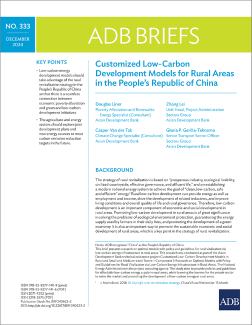
|
Customized Low-Carbon Development Models for Rural Areas in the People’s Republic of China
The brief draws on assessments of the low-carbon technologies available in rural areas in the PRC and the policy environment for low-carbon development. It outlines how policy makers could boost the contribution of rural areas to the country’s aim of achieving carbon peaking by 2030 and carbon neutrality by 2060.
2025.02
ADB
|
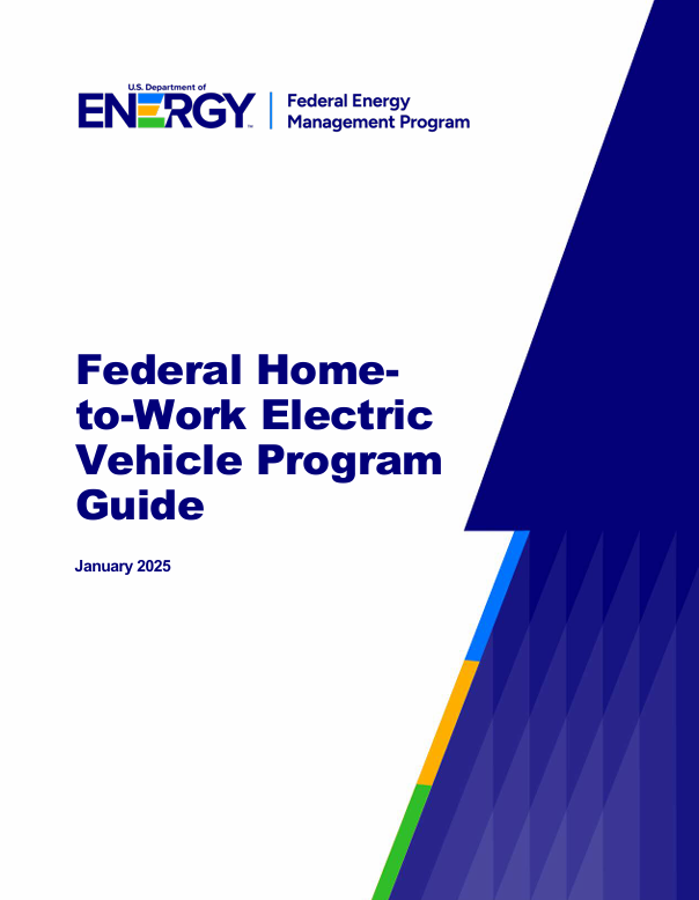
|
Federal Home-to-Work Electric Vehicle Program Guide
This document serves as a comprehensive resource for Federal agencies in developing their own program resources that promote the efficient and effective use of electric vehicles (EVs) for home-to-work travel while ensuring compliance with Federal regulations and sustainability objectives. One mission of the U.S. Department of Energy's Federal Energy Management Program (FEMP) Fleet program is to help federal fleet managers meet or exceed statutory requirements related to energy and environmental performance while improving overall fleet efficiency, reducing costs, and meeting mission requirements.
2025.01
DOE
|

|
Pathways to Commercial Liftoff: Clean Hydrogen (2024.12 Updated)
Clean hydrogen plays a key role in the decarbonization of both industrial sectors, like steelmaking and petrochemical processes, and transportation sectors, like aviation fuels and heavy-duty trucking. It may also serve as a key long-duration storage technology to meet rising electricity demand. It can be produced using different technologies, including but not limited to: electrolysis powered by clean electricity, natural gas reforming with carbon capture processes, methane pyrolysis, co-production with chlor-alkali, and even mining, as clean hydrogen can be formed geologically underground.
2024.12
DOE
|

|
Pathways to Commercial Liftoff: Virtual Power Plants 2025 Update
DOE published the Pathways to Commercial Liftoff: Virtual Power Plants report in September 2023. Since that publication, Virtual Power Plant (VPP) adoption has grown; new VPP deployments, new insights and analyses into benefits, and new tools and resources from within and outside DOE have emerged. However, deployment still needs to accelerate in the U.S. to reach 80-160 GW of VPPs (10-20% of peak load) that contribute to an affordable, reliable, and secure grid for all Americans. This Update supplements – but does not replace – the original 2023 VPP Liftoff Report by providing additional real-world examples, new resources, and updated industry insights that support VPP deployment.
2025.02
DOE
|
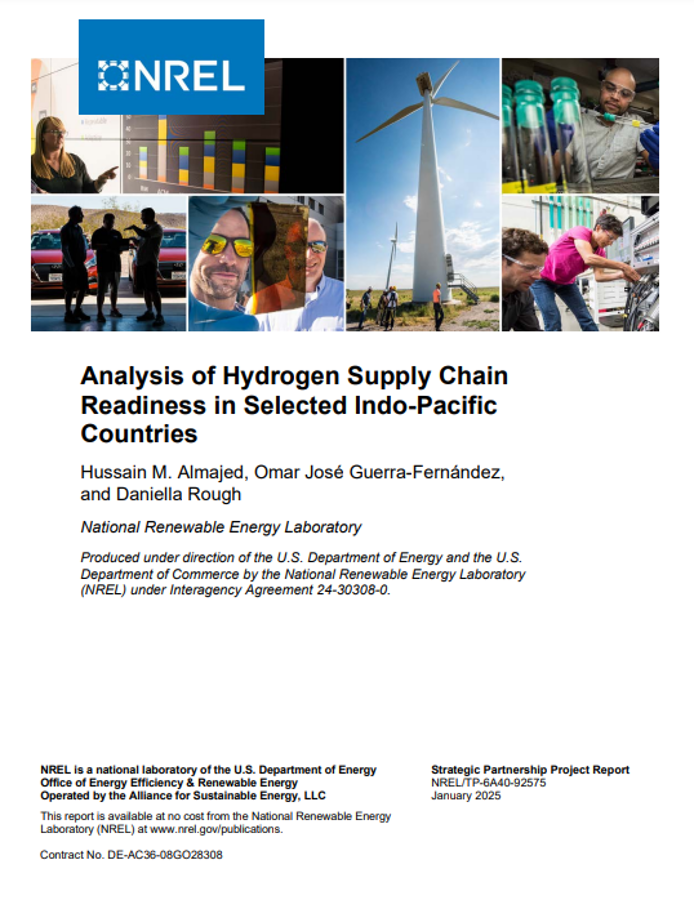
|
Analysis of Hydrogen Supply Chain Readiness in Selected Indo-Pacific Countries
This report explores the low-carbon hydrogen production and procurement targets of Indo-Pacific Economic Framework for Prosperity (IPEF) countries, highlighting key cost and infrastructure considerations. By 2030, production costs are targeted between US$1.4-4.8/kg-H2, with procurement prices at US$2.3/kg-H2, narrowing further by 2050. Midstream costs, including storage and transportation, are critical to meeting these targets and enabling hydrogen trade. The report discusses challenges such as infrastructure readiness, regulatory frameworks, and the need for improved data reporting. It emphasizes the importance of tax incentives, research investments, and port readiness to support the growt
2025.01
NREL(DOE)
|
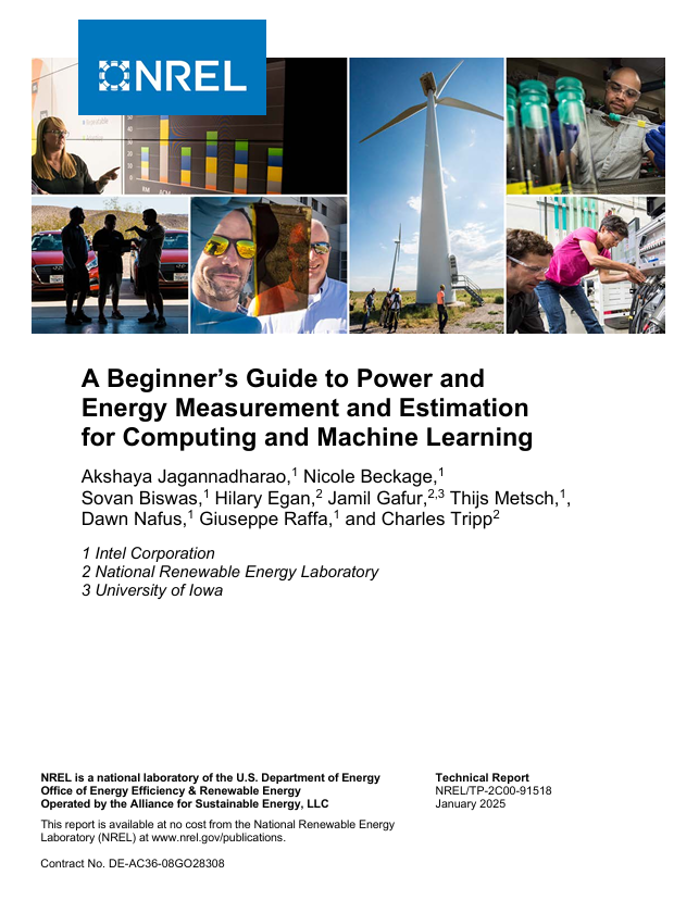
|
A Beginner's Guide to Power and Energy Measurement and Estimation for Computing and Machine Learning
Concerns about the environmental footprint of machine learning are increasing. While studies of energy use and emissions of ML models are a growing subfield, most ML researchers and developers still do not incorporate energy measurement as part of their work practices.
2025.02
NREL(DOE)
|
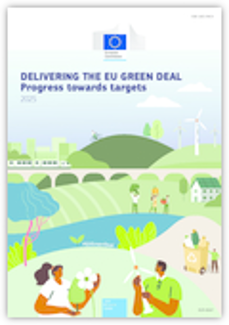
|
Delivering the EU Green Deal : Progress towards targets
This report provides a comprehensive assessment of progress towards the European Green Deal (EGD), the European Union’s transformative agenda for achieving climate neutrality by 2050. The analysis encompasses 154 quantifiable targets from 44 policy documents between 2019 and 2024 across key sectors such as climate, energy, circular economy, transport, agriculture and food, ecosystems and biodiversity, water, soil and air pollution. The study shows that significant achievement has been delivered so far but progress needs to accelerate in many areas. As of mid-2024, 32 of the 154 targets are currently “on track” and 64 are identified as “acceleration needed” meaning that more progress is neede
2025.02
European Commission
|
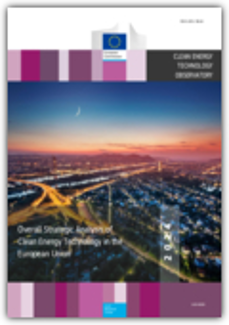
|
Clean Energy Technology Observatory, Overall strategic analysis of clean energy technology in the European Union
This report by the Clean Energy Technology Observatory (CETO) provides an updated strategic analysis of the EU clean energy technology sector. The EU's renewable share in gross final energy consumption rose to 24.5% in 2023, and to 44.7% of gross electricity consumption. The electrification rate however has remained almost unchanged at 26% over the decade to 2023, indicating slow progress on decarbonisation of transport and heating sectors. The EU renewable energy industry saw growth in turnover and gross value added in 2023, outperforming the overall economy. However, the production value of clean energy technologies declined in some areas, such as bioenergy, PV, and hydrogen electrolyser p
2025.02
European Commission
|
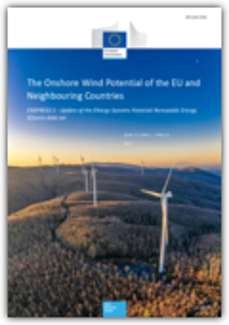
|
The onshore wind potential of the EU and neighbouring countries
This report presents Europe’s economically viable onshore wind energy potential at high geographical resolution (the JRC ENSPRESO 2 data set). It finds that in some scenarios, installable capacity and annual electricity generation are approximately double those previously estimated, indicating that onshore wind can play a much bigger role in the decarbonisation of Europe’s energy system than previously assessed. It also finds that policy decisions on setback distances have a significant impact on the available potential. ENSPRESO 2 builds on the original ENSPRESO project (ENergy Systems Potential Renewable Energy SOurces) which concluded in 2018. The updated version operates at an unpreceden
2025.02
European Commission
|
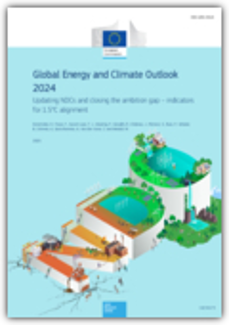
|
Global energy and climate outlook 2024 : Updating NDCs and closing the ambition gap : indicators for 1.5°C alignment
This edition of the Global Energy and Climate Outlook (GECO 2024), in its 10th year of publication, presents an updated view of the implications of energy and climate policies worldwide, finding that the world is still not on track to achieve its climate targets, as both implementation gaps (between current policies and pledges) and ambition gaps (between current pledges and a 1.5°C trajectory) remain. Whilst emissions peak in the coming years in all scenarios, the world is currently, in the absence of additional action, on track for 2.6°C of warming by the end of the century.
2025.02
European Commission
|
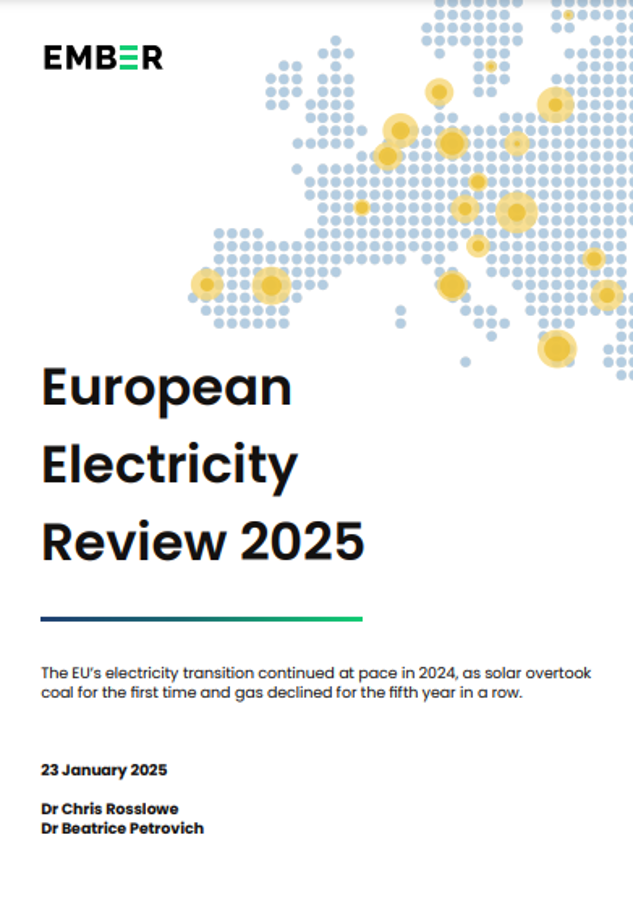
|
European Electricity Review 2025
The EU’s electricity transition continued at pace in 2024, as solar overtook coal for the first time and gas declined for the fifth year in a row.
2025.01
Ember
|
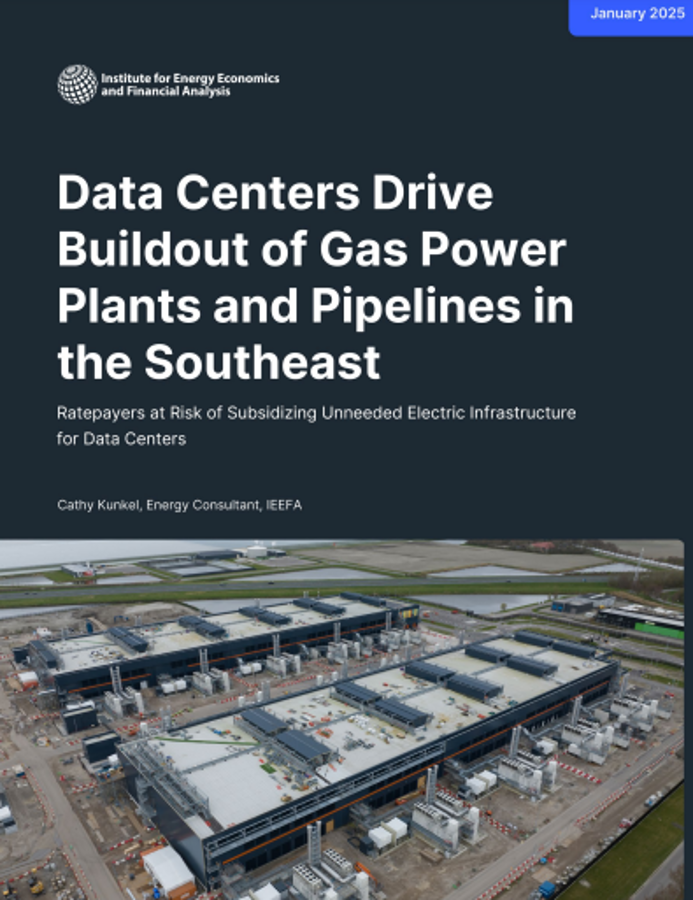
|
Data Centers Drive Buildout of Gas Power Plants and Pipelines in the Southeast
Southeast utilities and pipeline companies are planning a major buildout of natural gas infrastructure (pipelines and power plants) over the next 15 years. This report focuses on the states of Virginia, North Carolina, South Carolina and Georgia. Utilities in these states plan to build more than 20,000 megawatts (MW) of natural gas power plants by 2040.
2025.01
IEEFA
|
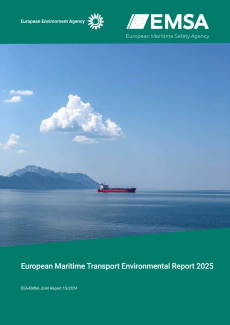
|
European Maritime Transport Environmental Report 2025
This is the second edition of EMTER, a joint report by the European Maritime Safety Agency (EMSA) and the EEA. It gives an update on the environmental performance of the sector and an assessment of efforts to make it more sustainable.
2025.02
EEA
|
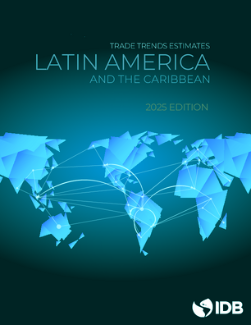
|
Trade Trends Estimates: Latin America and the Caribbean. 2025 Edition
This report provides estimates of Latin America and the Caribbeans international trade flows for 2024. It was prepared by the Productivity, Trade, and Innovation Sector (PTI) at the Inter-American Development Bank (IDB).
2025.02
IDB
|
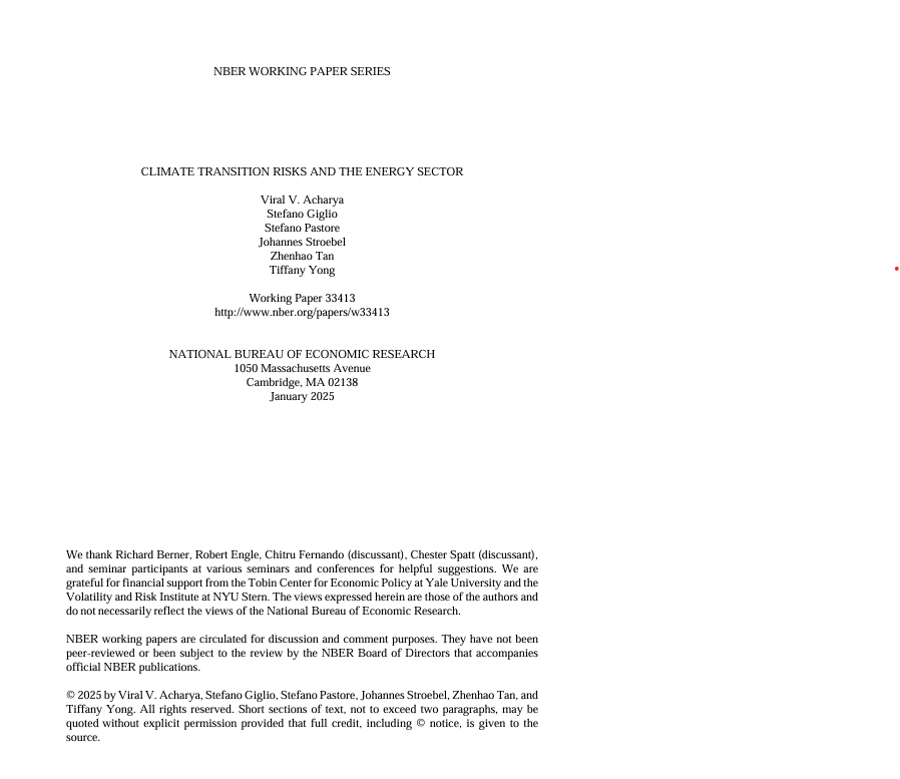
|
Climate Transition Risks and the Energy Sector
We build a general equilibrium model to study how climate transition risks affect energy prices and the valuations of different firms in the energy sector. We consider two types of fossil fuel firms: incumbents that have developed oil reserves they can extract today or tomorrow, and new entrants that must invest in exploration and drilling today to have reserves to potentially extract tomorrow.
2025.02
NBER
|
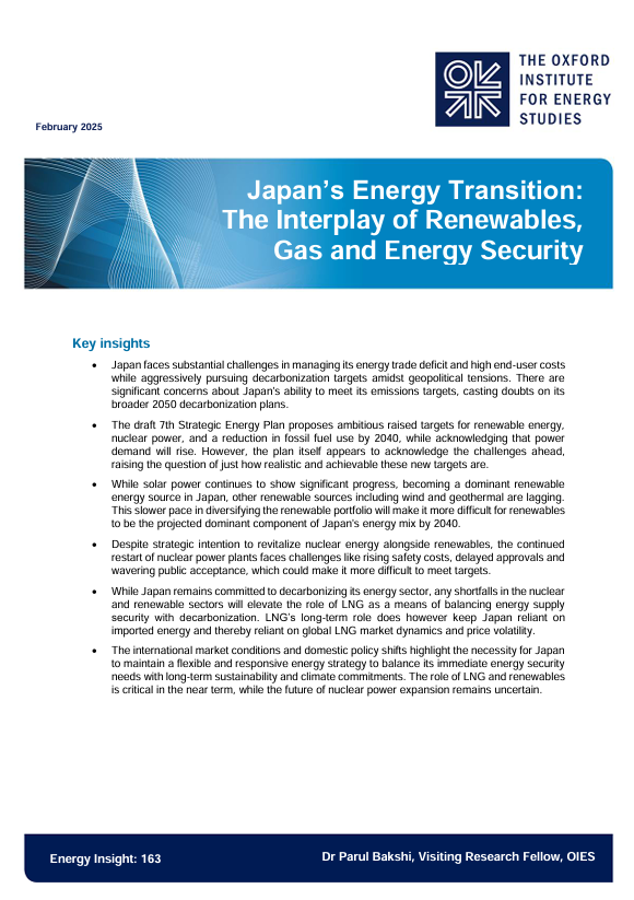
|
Japan’s Energy Transition: The Interplay of Renewables, Gas and Energy Security
Japan faces substantial challenges in managing its energy trade deficit and high end-user costs while aggressively pursuing decarbonization targets amidst geopolitical tensions. There are significant concerns about Japan’s ability to meet its emissions targets, casting doubts on its broader 2050 decarbonization plans. The draft 7th Strategic Energy Plan, which is expected to be published soon, proposes ambitious raised targets for renewable energy, nuclear power, and a reduction in fossil fuel use by 2040, while acknowledging that power demand will rise.
2025.02
OIES
|
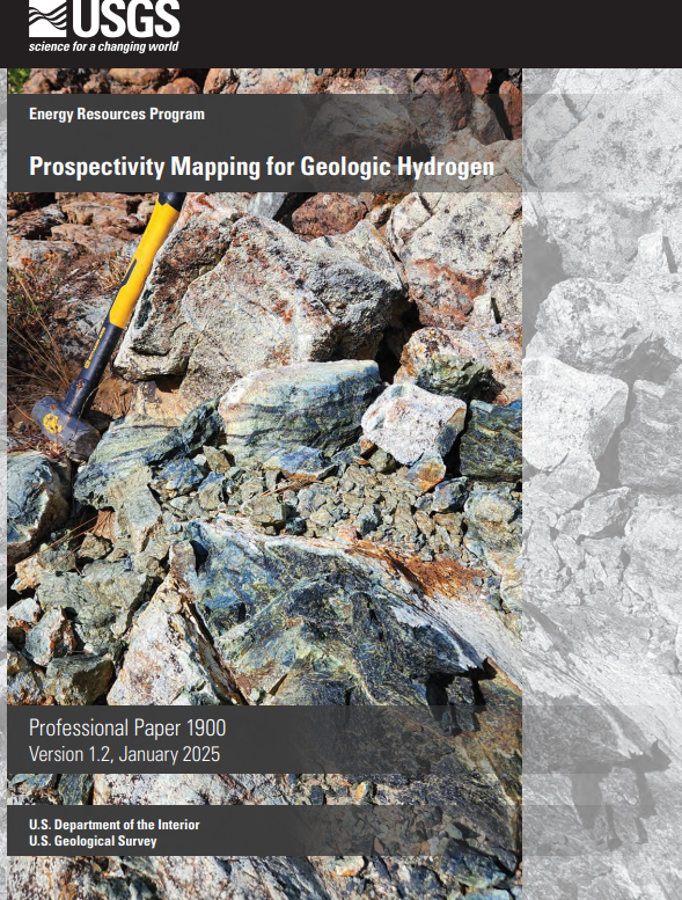
|
Prospectivity Mapping for Geologic Hydrogen
Geologic, or naturally occurring, hydrogen has the potential to become a new, low-carbon, primary energy resource. Often referred to as “white” or “gold” hydrogen, this gas occurs naturally in the Earth’s subsurface, similar to petroleum resources. However, unlike petroleum, which releases carbon dioxide when burned, burning hydrogen only produces water as a byproduct.
2025.01
USGS
|
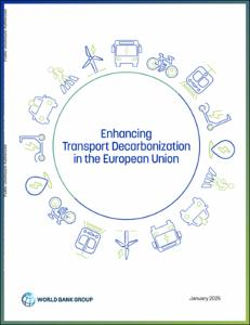
|
Enhancing Transport Decarbonization in the European Union
This report highlights strategic areas of opportunity for the EU and its member states to use existing funds more efficiently while implementing public policies and incentives that can drive substantial progress toward meeting the EU’s transport decarbonization goals.
2025.02
World Bank
|
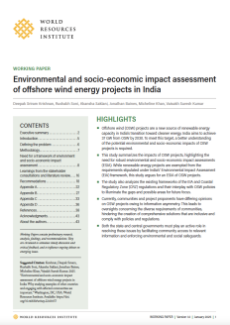
|
Environmental and Socio-Economic Impact Assessment of Offshore Wind Energy Projects in India
Offshore wind (OSW) projects are a new source of renewable energy capacity in India’s transition toward cleaner energy. India aims to achieve 37 GW from OSW by 2030. To meet this target, a better understanding of the potential environmental and socio-economic impacts of OSW projects is required. This study summarizes the impacts of OSW projects, highlighting the need for robust environmental and socio-economic impact assessments (ESIA).
2025.02
WRI
|
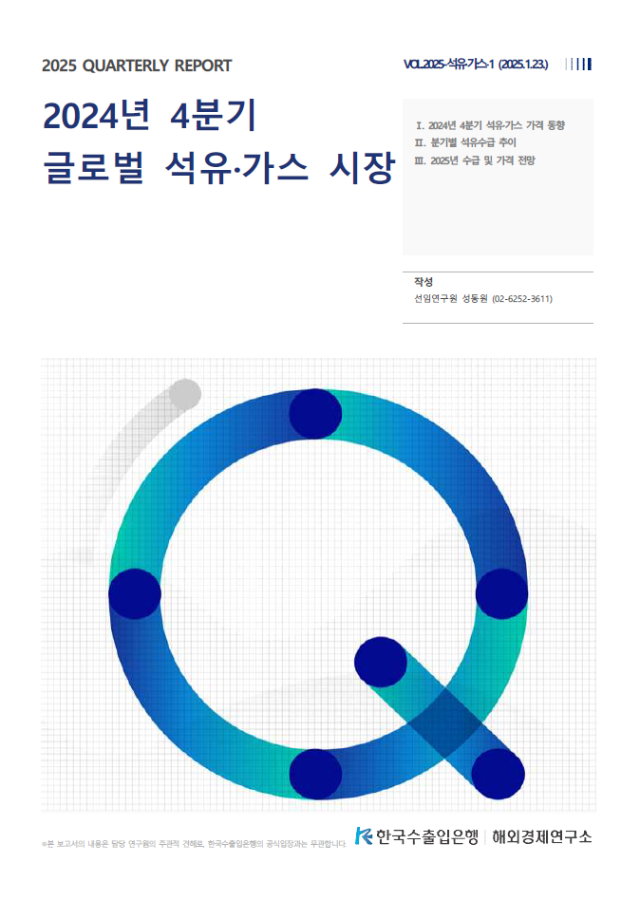
|
글로벌 석유가스 시장 분기동향 보고서(2024년 4분기)
한국수출입은행에서 글로벌 석유가스 시장 분기 보고서(2024년 4분기)를 발표하였다. 2024년 4분기 석유·가스 가격 동향을 살펴보면 유가는 수요둔화 우려, 미국 금리인하 지연 가능성 등으로 배럴당 70달러 초중반대(두바이유) 로 하락, 12월말 이후 공급차질 우려로 급등하여 1월 중순 80달러 중반대 기록하였고 천연가스 가격은 난방용 수요증가 기대감으로 상승세를 지속하여 10월말 mmBtu당 2달러 초반대(NYMEX)에서 12월말 4달러선 육박, 1월 중순 4달러 초반대 기록하였다.
2025.02
한국수출입은행
|
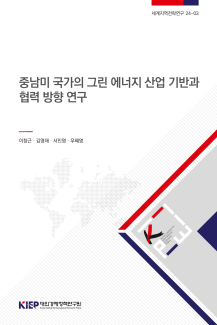
|
중남미 국가의 그린 에너지 산업 기반과 협력 방향 연구
중남미 지역은 화석연료가 여전히 풍부한 지역이지만, 재생에너지 분야에서도 큰 잠재력을 지닌 곳으로 평가받고 있다. 전세계적으로 에너지 전환이 진행되고 있는 상황은 신재생에너지 분야에서 비교우위를 보유하고 있는 중남미 국가들에게 산업 육성의 기회로 작용한다. 다수의 중남미 국가들은 태양광과 풍력에서 뛰어난 원가경쟁력을 보유하고 있다. 이처럼 전세계적인 필요와 중남미 지역이 보유한 장점은 그린 에너지 육성의 당위성을 제공하고 있으나, 이러한 목표를 실현하는 데 필요한 조건들은 갖추지 못하고 있는 것으로 평가되며, 따라서 많은 부문에서 국제협력을 통한 대응이 이루어져야 한다. 이 연구는 중남미 국가의 그린 에너지 산업 현황과 제도적 기반에 대한 분석을 실시하고, 이를 바탕으로 우리나라 기업의 진출 및 협력 방향을 제시하는 것이 목적이다.
2024.12
대외경제정책연구원
|

|
탄소중립도시 조성요소의 규제 샌드박스 도입 현황 및 과제
본 연구는 탄소중립 도시 조성을 위한 기술적・제도적 기반을 마련하기 위해 수행되었다. 탄소중립기본법(2021년 시행) 이후, 기존 도시에서 탄소중립 도시로의 전환을 위한 명확한 개념 및 제도적 기준이 부재한 상황에서, 이를 해결하기 위한 규제완화 및 정책적 방향성을 제시하고자 한다.
2024.12
건축공간연구원
|
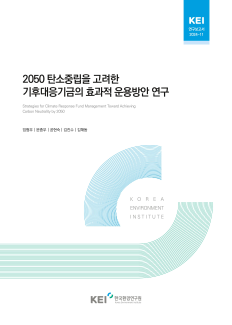
|
2050 탄소중립을 고려한 기후대응기금의 효과적 운용방안 연구
기후변화에 대응하기 위해 기후금융이 반드시 필요하며, 공적 기금 조성을 통한 공적 기후금융을 어떻게 운용할 것인가에 대한 중요성이 커지고 있다. 2022년에 신설된 기후대응기금은 ‘기후위기에 효과적으로 대응하고 탄소중립 사회로의 이행과 녹색성장을 촉진하는 데 필요한 재원을 확보’하기 위해 설치되었다. 기후대응기금이 차지하는 비중은 2024년 전체 탄소중립 예산의 약 20%에 달하며, 크게 온실가스 감축, 공정한 전환, 탄소중립 기반구축, 신유망·저탄소생태계 조성의 4가지 분야에 지원된다.
2024.12
한국환경연구원
|
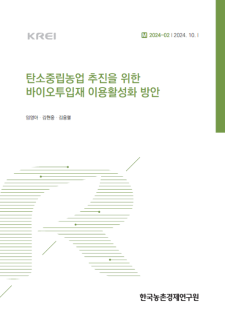
|
탄소중립농업 추진을 위한 바이오투입재 이용활성화 방안
온실가스 감축 및 환경개선, 순환경제 활성화 및 투입재 해외 의존도 저감, 농업의 미래 성장산업화 등으로 바이오투입재 이용 활성화를 하나의 대안으로 고려할 수 있다. 그러나 현장에서 활용 가능한 바이오투입재의 수가 많지 않고, 관련 정보가 부족하며, 관행 투입재 대비 높은 가격을 형성하고 있어 이러한 장애요인을 개선할 방안에 관한 연구가 필요하다. 본 연구에서는 온실가스를 줄이기 위한 바이오투입재(저메탄사료, 바이오플라스틱, 가축분뇨 에너지화)의 효과성을 검토하고, 기업의 제품 생산 및 농업인 소비를 촉진하기 위한 정책 방안을 제시하고자 한다.
2024.12
한국농촌경제연구원
|

|
탄소배출권의 이슈와 쟁점
탄소배출권(CERs: Certified Emission Reductions)은 특정 기업이나 기관이 일정 기간 동안 온실가스의 일정량을 배출할 수 있는 권리를 말한다. 이는 온실가스 배출량 감소를 위한 시장 기반의 환경 정책 도구로, 정부가 기업들에 배출권을 할당하고, 기업들이 이를 거래할 수 있게 함으로써 전체 배출량을 관리하고 줄이는 것을 목표로 하는데, 이를 탄소배출권 거래제도(ETS: Emission Trading Scheme)라고 한다. 탄소배출권 거래제도는 기후변화 문제에 대응하기 위한 국제적 압력과 각국의 환경 정책 강화 필요성이 도입의 주요 배경이 되었으며, 기후변화는 지구온난화의 주요 원인으로, 탄소배출권 거래제도는 이러한 온실가스 배출량을 줄이기 위한 다양한 정책적 수단의 필요에 따라 도입된 제도 중 하나로 온실가스 감축의무가 있는 국가 및 기업 등이 할당된 배출량과 실제 배출량 간의 차이가 있을 때, 실제 배출량이 적을 경우 이를 판매할 수 있는 제도를 지칭한다.
2024.12
한국법제연구원
|
